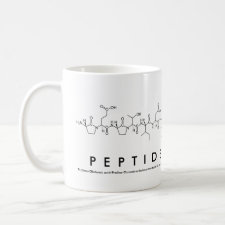
Authors: Bi X, Yang KL
Article Title: Complexation of Copper Ions with Histidine-Containing Tripeptides Immobilized on Solid Surfaces.
Publication date: 2007
Journal: Langmuir
Volume: 23
Issue: (22)
Page numbers: 11067-11073.
DOI: 10.1021/la7016243
Abstract: Abstract: Short oligopeptides that complex with metal ions with high affinity and high specificity are of interest to the design of chemical sensors. In this study, we compare the complexation properties of two copper-selective tripeptides, Gly-Gly-His and His-Gly-Gly, either in aqueous solutions or immobilized on solid surfaces. Our results show that the copper complex formed by Gly-Gly-His is more stable than the complex formed by His-Gly-Gly in aqueous solutions, because the position of histidine (His) in the Gly-Gly-His permits the formation of a tetragonal copper complex with a high stability. However, when the tripeptides are immobilized on aldehyde-decorated silicon wafer surfaces under a reaction condition that gives rise to near maximum surface densities of tripeptides, both immobilized Gly-Gly-His and His-Gly-Gly experience strong steric hindrance on the over-crowded surfaces. The surface crowding effect causes less complexation with copper ions than that in aqueous solutions. To ensure a proper surface density on the surface for complexation with copper ions, a so-called two-dimensional (2D) metal-ion imprinting technique is employed to avoid the surface crowdedness. By immobilizing Gly-Gly-His in the presence of copper ions, we create a tripeptide-functionalized surface that exhibits high complexation capability for copper ions. We attribute the higher copper complexation capability to the proper intermolecular distances obtained from the ion-imprinting procedure that gives the copper-tripeptide complex a preferential tetragonal geometry. Our results show that the amounts of copper complexed to a copper-imprinted surface functionalized with Gly-Gly-His are 62% higher than those of a nonimprinted surface
Template and target information: copper ion, Cu(II)



Join the Society for Molecular Imprinting

New items RSS feed
Sign-up for e-mail updates:
Choose between receiving an occasional newsletter or more frequent e-mail alerts.
Click here to go to the sign-up page.
Is your name elemental or peptidic? Enter your name and find out by clicking either of the buttons below!
Other products you may like:
 MIPdatabase
MIPdatabase









